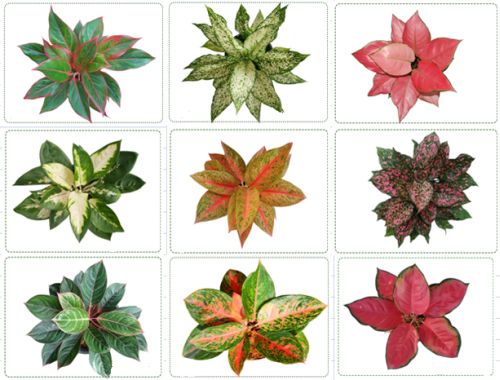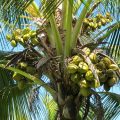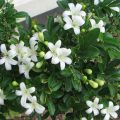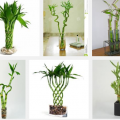For most urban dwellers, there seem to be not enough greenery around. In the city, tall and concrete lampposts and structures instead of big, healthy trees adorn the streets. The surroundings are monochromatic and cold, not a leaf rustling, and not a hint of nature exists except for the occasional skinny and dirty bird that we see perched on jumbled electrical lines above, or the scraggy bushes around buildings.

It is comforting to know then that we can have the feel of nature in our own homes or even offices with the help of indoor pants or foliage such as the Aglaonema or La suerte as it is locally known.
The beauty of the foliage plant Aglaonema lies in two things: its brilliantly patterned leaves and its ability to survive in low-light conditions. Some say the last attribute is probably what makes Aglaonema the most popular indoor plant, it seemed to have been invented for dim corners. It is tough and attractive, often surviving long periods of time in potbound conditions. Aglaonema, known world-wide as the Chinese Evergreen, was first cultivated in China before eventually finding its way to Europe and America. Hybrids were then developed in Southeast Asia, specifically Malaysia, Philippines, and Thailand. Among Aglaonema’s 50 or so species, the ‘Silver Queen’ is the most widely cultivated in the world. Growers of all nationalities have been fascinated with its white and silver blotched grayish green leaves. Locally, producers are growing ‘Manila Whirl’, ‘Emerald Beauty’, and ‘Malay Beauty.’ Aside from these, they have also acquired new cultivars like the ‘Superba’, ‘King of Siam’, ‘Emerald-on-ice’, and some of the Aglaonema crispum and A. nitidum.
Because of the many variations and sizes of these plants, growers have many choices on how to use and grow them. For our local conditions, researchers from the Institute of Plant Breeding, the Department of Horticulture and the Philippine Council for Agriculture, Forestry and Natural Resources in UPLB have developed these various techniques for growing Aglaonema.
To propagate using seeds, choose only mature, orange or red seeds. Remove the fleshy pericarp by washing before planting in the germination media. The medium may be composed of “either pure coconut coir dust, pure sphagnum moss or a mixture of one part sand and one part coconut coir dust.” The seedlings will be ready for transplanting in five to six weeks.
The plant’s suckers – the shoots that extend up from the ground, can also be used to propagate Aglaonema. Cut the suckers from the parent plant during transplanting or repotting to avoid damaging the roots and the base.
The third technique for propagation is by using the shoot tip cuttings of the aglaonema. Use only tip cuttings that have a minimum of five leaves. Remove the two older leaves and directly stick the cuttings in a rooting medium composed of a mixture of one part sawdust and one part burnt rice hull. Water every other day and transplant the rooted cuttings after four or five weeks.
For large-scale propagation, the researchers recommend nodal cutting which makes use of the plant’s two-node or half-stem (with one bud) as propagules. Before planting, growers must soak the nodal cuttings as well as its rooting medium in fungicide solution. Basal ends of half-stem cuttings need to be treated with 50 ppm of indole butyric acid (IBA) or napthalyne acetic acid (NAA) for 15 minutes. Insert the cuttings partially in the medium and place under shade. Daily but moderate watering is recommended. After eight to ten weeks, pot the cuttings individually in size 3 or 4 pots in the following non-soil mixes: mixture of one part sand and one part coconut coir dust or an equal combination of sand, coconut coir dust and rice hull. After two weeks, fertilize the plants every week thereafter, alternating urea or complete fertilizer at 1/2 tsp/4 l of water. In addition, slow release fertilizer, such as Multicoat, must be supplemented every quarter. The plants should be ready for marketing in five to eight months.
—————————————-
Source:
PCARRD Information Bulletin no. 138a/2000: Mass Propagation of Aglaonemas by Dr. Calixto Protacio and Ms. Lilibeth Obmerga, Dept. of Horticulture, College of Agriculture, UPLB. For more information, contact Dr. Joy Eusebio, Director, Crops Research Division, PCARRD, UPLB, Tel no. (049)536-0014 to 15; and 536-0017 to 20.)
By: Thea Kristina M. Pabuayon, BAR Digest, October-December 2001 Issue (Vol. 3 No. 4)






